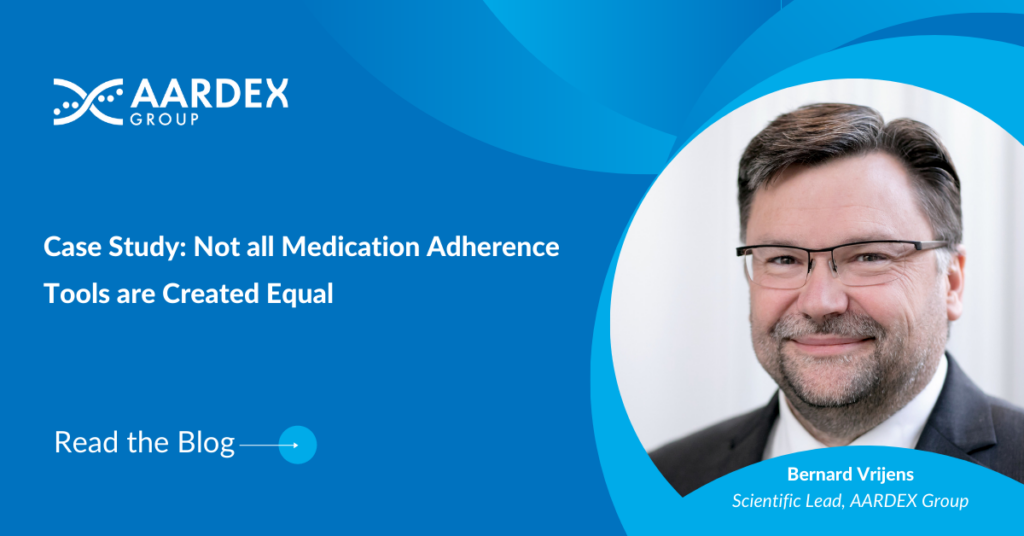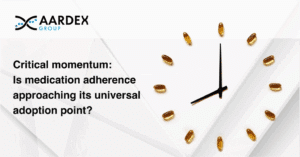It may hold the potential to solve one of healthcare’s biggest problems, but not all Medication Adherence Tools are created equal. The key to helping people to take their medicines as prescribed, whether within a clinical trial or as part of routine care, is removing, rather than erecting, barriers.
Medication Adherence Tools can give clinicians and investigators all the information they need to identify and respond to risky medicine-taking behaviors. But, if they are to generate reliable, actionable data the solution must be frictionless for patients.
Indian experience1
A recent Indian study highlights that technology alone is insufficient to address the problem of medication adherence.
It compared the efficacy of urine isoniazid testing to that of a cellphone-based monitoring system that asks tuberculosis (TB) patients to call a toll-free number every time they take a dose. A computer registers the event and provides healthcare providers (HCP) with a visualization of the person’s real-time adherence record.
The system has been used to monitor more than 150,000 people in the Indian government’s TB treatment program, many of whom also live with HIV, since 2015. And it matters because poor adherence to TB treatment has serious consequences.
In TB, poor medication adherence is associated with disease relapse, the development of drug resistance, and even an increased risk of death. It is worth noting that post-treatment disease recurrence may occur if a person misses fewer than even 10% of doses. What’s more, poor adherence is a threat to public health, as if undertreated the disease can continue to spread in the community.
The study, which included 597 people from 11 clinics in Mumbai and five in Chennai and Vellore, found that the self-report diary feature had “suboptimal sensitivity” of 70%. Engagement with the system, said the paper, was “consistently lower than adherence measured by the urine test”.
HCPs, said the paper, may “face major challenges in using such an electronic diary to identify nonadherence”.
Optimal Medication Adherence Tools are Frictionless for Patients
Medication Adherence Tools have huge potential for solving one of healthcare’s biggest problems. According to the World Health Organization, around 50% of people with long-term conditions do not take their medications as prescribed by their doctor. The consequences include worsening outcomes, additional comorbidity, and even death.2
The factors that lead to poor medication adherence are complex, multifaceted, and individual, though they broadly fit into two categories. Intentional non-adherence is deliberate and largely associated with patient beliefs and motivation, whereas unintentional non-adherence tends to be driven by a lack of capability or opportunity to take medications (ref Michie et al. ISBN 978-1-912141-00-5, 2014).
Of course, the two are not mutually exclusive. Certain types of unintentional non-adherence, such as forgetting, tend to be more likely when the person’s motivation to take the medication is low, while people who unintentionally cannot afford their medicine do not take it intentionally, for example.
But what they all have in common is that they are barriers that need to be torn down. Yet we know that traditional methods, such as pill count, self-report, and biomarker monitoring, are ineffective. They are open to bias and provide only a snapshot of medicine-taking behavior. Some are invasive and, crucially, all place an additional burden on the patient.
More advanced methods, such as a digital diary or asking patients to record and submit a video of themselves administrating the medication, have emerged as possible solutions.
However, as the Indian experience shows, any solution that necessitates patients’ active involvement is doomed to failure. It is a self-selecting approach that only those who are engaged in the protocol and the technology will use. What’s more, adding extra steps to an already challenging dosing regimen only serves to place more pressure on the patient – making poor adherence more, not less, likely.
Put simply, if we are to support people to take their medication, we need to be removing barriers, not putting them up. Data should be collected automatically in the background without requiring regular input from the patient.
Smart Package Monitoring for High Quality, High-Density data.
Combining the power of smart packaging, for example, smart pill bottles, and powerful analytics provides an opportunity to manage medicine-taking behavior without patients even noticing.
Connected pre-filled syringes or smart blister packs, for example, can detect when the injection was administered, or the tablet removed from the packet. This information is transmitted to a cloud-based platform for analysis. Algorithms then spot missed doses or erratic dosing patterns, such as medication holidays, meaning teams can see who is at risk, and deliver personalized interventions.
Smart Packing is an Evidence-based Strategy for Managing Medication Adherence
This is an evidence-based approach. Studies have shown that smart package monitoring is 97% accurate, compared to 60% accurate for pill count, 50% for healthcare professional rating, and just 27% for self-report.3
It works because it is a closed feedback loop: a continuous, frictionless method that automatically feeds information back to the study or clinical team that informs tailored action.
And all it asks of patients is for them to take their medicine from the package.
References:
- Thomas, B. E., Kumar, J. V., Chiranjeevi, M., Shah, D., Khandewale, A., Thiruvengadam, K., … & Subbaraman, R. (2020). Evaluation of the accuracy of 99DOTS, a novel cellphone-based strategy for monitoring adherence to tuberculosis medications: comparison of DigitalAdherence data with urine isoniazid testing. Clinical Infectious Diseases, 71(9), e513-e516.
- Chisholm-Burns, M. A., & Spivey, C. A. (2012). The ‘cost’ of medication nonadherence: consequences we cannot afford to accept. Journal of the American Pharmacists Association, 52(6), 823-826
- El Alili, M., Vrijens, B., Demonceau, J., Evers, S. M., & Hiligsmann, M. (2016). A scoping review of studies comparing the medication event monitoring system (MEMS) with alternative methods for measuring medication adherence. British journal of clinical pharmacology, 82(1), 268-279.
About the Author
Bernard holds a PhD from the Department of Applied Mathematics and Informatics from Ghent University, Belgium. As Scientific Lead at AARDEX ® Group, Bernard oversees the research and development of sophisticated analytical methods for monitoring participant medication-taking behaviours.
Along with providing guidance on adherence to Pharmaceutical, BioPharma, and Academic organizations, Bernard is a founding member of the International Society for Patient Adherence (ESPACOMP) and is an active member of several EU and US-funded consortiums that focus on adherence. Having co-authored several book chapters, over 100 peer-reviewed scientific papers, Bernard is considered an expert in his field.



